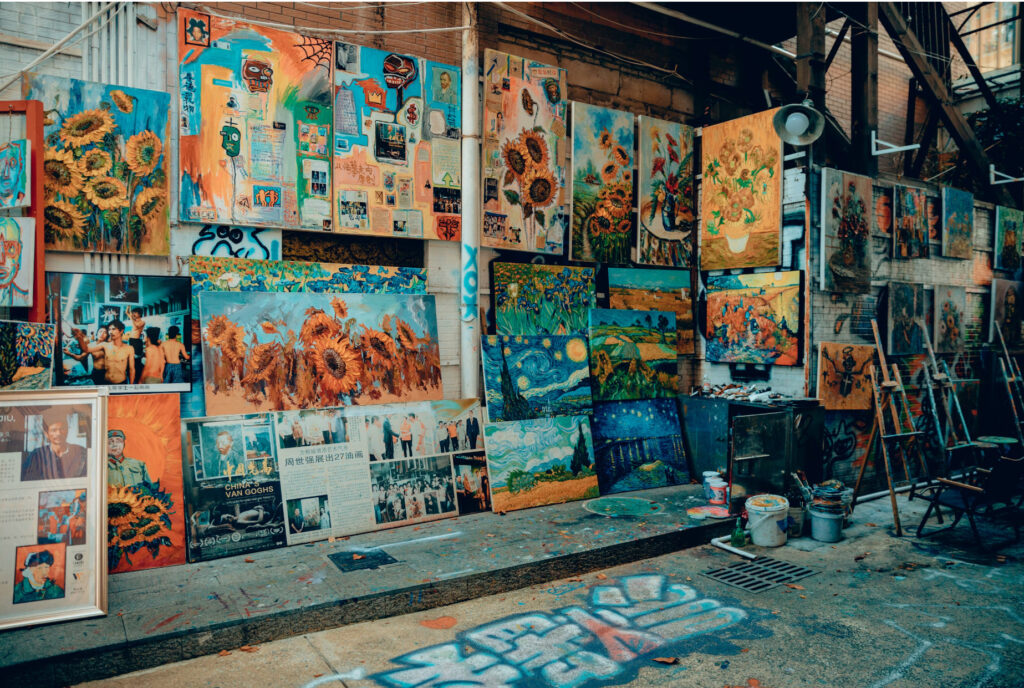Contents
Introduction:
Three decades ago, Dafen Village was a poor and humble small village located in Longgang District, Shenzhen, Guangdong Province, China. The pace of life for everyone in the village was calm and simple. However, since 1989, after a Hong Kong businessman opened the first oil painting studio there, primarily replicating Western masterpieces, the village began to undergo a dramatic transformation. Over time, this small village gradually developed into one of the world’s largest bases for oil painting production and sales, widely known as the “Global Oil Painting Factory.” Today, the story of Dafen Village is not only about the rise of the art industry but also about how it has shaped and found its identity in the wave of globalization.
The Past and Evolution of the Global Oil Painting Factory
Dafen Village initially started by replicating Western masterpieces at low cost, a model that played a crucial role in its early development. Initially, the village’s artists primarily honed their skills by imitating and replicating classic European oil paintings to make a living. These replicas were generally low-cost because the production process resembled assembly line work, with several artists collaborating on a single painting, thus significantly improving efficiency and reducing costs.
This business model attracted a large number of domestic and international customers, especially wholesalers and retailers in the decorative art market. Due to the low prices, Dafen Village’s replica paintings quickly captured a large portion of the global market. These paintings were widely used for decoration in hotels, restaurants, offices, and homes, making Dafen Village globally known as the “Oil Painting Village.”
However, as the market evolved and artistic tastes changed, the simple replication of Western masterpieces began to show its limitations. The art market started to value originality and artistic quality more. Therefore, in recent years, Dafen Village has actively transformed, encouraging artists to create original works and enhance the artistic level and market value of their works. This shift not only aids in the personal growth of the artists but also allows the art industry in Dafen Village to continue to develop, gradually transitioning from a “global factory” to a “creative center.”
Photographer: Lin Renais
Dafen Village Today: “The Global Oil Painting Factory of the New Era”
By the early 21st century, Dafen Village had developed into one of the world’s largest bases for handmade oil painting production. The village is home to a large number of painters and art studios, not only replicating classic art pieces but also creating original oil paintings to meet domestic and international market demands. It is estimated that over ten thousand people in Dafen Village are directly or indirectly involved in oil painting production and trade, including artists, frame makers, and sales personnel.
Dafen Village is not only a production and commercial center but has also become a cultural attraction. Every year, thousands of tourists and art enthusiasts visit, where they can purchase high-quality and reasonably priced oil paintings and witness artists creating them live.
Over time, Dafen Village has gradually transitioned from merely replicating Western masterpieces to increasingly encouraging artists to engage in original work, thereby enhancing its artistic value and market position. The development of this village also reflects the growth and transformation of the modern art market in China.
Today, the story of Dafen Village, from its initial low-cost production model to a more mature and diversified art innovation center, is a microcosm of Shenzhen and China’s modernization and urbanization process. The development of this region is not only reflected in economic growth but also in cultural and artistic progress.
As the global market increasingly demands quality and originality, Dafen Village has begun to encourage artists to develop personal styles and create original art pieces. This shift marks a transition from simple replication work to more creative and artistic endeavors. Artists are exploring new techniques and materials, and the village is gradually becoming a center for art education and cultural exchange.
The Transformation of the Oil Painting Factory in the New Era of AI
In 2023, with the development of advanced image generation tools like OpenAI’s DALL·E, the global art production and consumption patterns indeed faced significant changes. This technology allows anyone to create visually impressive artworks, even without traditional painting skills. For places like Dafen Village, which historically relied on manual replication and creation of oil paintings, the rise of AI technology undoubtedly presents challenges but also new opportunities.
Benefits:
- Artistic Innovation and Diversity: AI can help artists explore new creative boundaries, generating unique artistic styles and ideas, thereby enriching their creative content and forms.
- Increased Efficiency: AI technology can take on some repetitive tasks in the art production process, such as preliminary sketches or color matching, allowing artists to devote more energy to creativity and detail refinement.
- Education and Popularization: AI tools can serve as educational tools, helping beginners quickly learn basic artistic creation skills, thereby lowering the barriers to art creation.
Challenges:
- Market Competition: With the proliferation of AI creation tools, traditional artists may face more intense market competition, especially in markets that primarily produce art pieces at low cost.
- Artistic Value and Recognition: AI-generated art might spark debates about what constitutes “real art” and the value and significance of art. The value of traditional artists’ craftsmanship and creative processes might be reassessed.
- Economic Impact: If AI can produce artworks at lower costs and higher efficiency, communities that rely on manual art production might face economic pressures.
Future:
- Originality and Innovation: Promote more original art pieces and personal styles to increase the cultural and economic value of artworks.
- Technology Integration: Explore how AI and other digital tools can assist in art creation and production, for example, by using AI to generate initial designs, which are then refined by artists.
- Cultural Tourism and Education: Utilize the art resources and history of Dafen Village to develop it into a destination for art education and cultural tourism, attracting domestic and international visitors and students, while also developing Dafen’s tourism industry.
- Global Perspective: The term ‘AI Oil Painting World Village’ emphasizes Dafen Village’s influence and connectivity in the global art market, reflecting its cultural and commercial international dimensions
In summary, the future development of Dafen Village will need to maintain its advantages as a global oil painting production base while adapting to changes brought about by new technologies and exploring new ways to cultivate original art and cultural values. This will help ensure its ongoing relevance and competitiveness in the global art market.
Conclusion:
With the advent of the new AI era, for Dafen Village, a traditional industry must seek self-renewal amidst globalization and technological innovation. This means adapting to these changes, potentially needing to reposition its artistic and business strategies. They can use AI technology to enhance their artistic creativity and production efficiency, and of course, human imagination, while also needing to further explore in maintaining art quality and cultural values. In this way, Dafen Village can continue to maintain its unique position in the global art market, and even leverage AI technology to open up new artistic directions and business models, ushering in a brand-new “AI Oil Painting World Village.”
Published by: Mr. Leo Mao. You are welcome to share this article, but please credit the author and include the website link when doing so. Thank you for your support and understanding.



